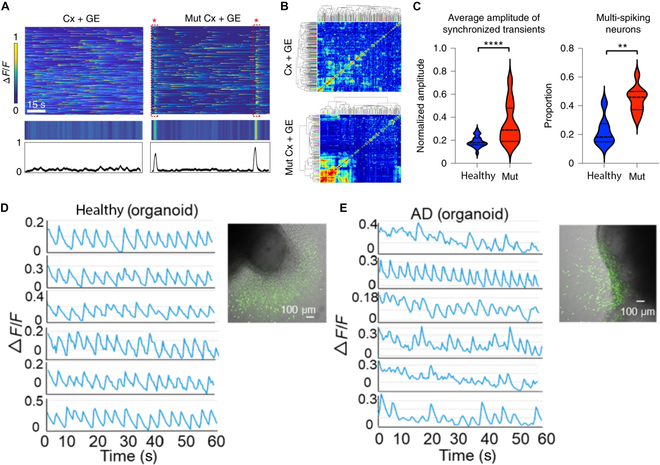Fig. 4.

Applications of brain organoid neural networks in neurological diseases. (A) MECP2-mutant cerebral cortex–ganglionic eminence fusion organoids exhibit spontaneous synchronized calcium transients that are not observed in the cerebral cortex–ganglionic eminence fusion organoids, reflected in the raw ΔF/F colorized amplitude plot (top) and synchronization amplitude plot (bottom) [45]. (B) Cluster grams following hierarchical clustering of calcium spiking data [45]. (C) Comparison of the average amplitude of synchronized transients and proportion of multi-spiking neurons [45]. (D) Single-cell tracings of spontaneous calcium surges in the migrated neurons from healthy organoids [71]. (E) Single-cell tracings of spontaneous calcium surges in the migrated neurons from AD organoids [71].
